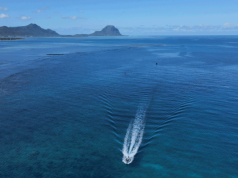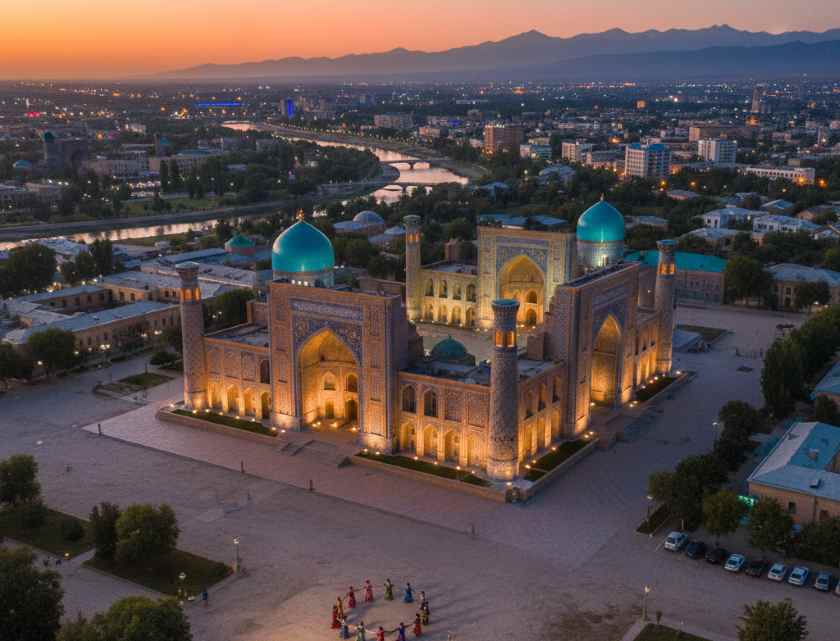The Republic of Seychelles is recognised for its stable political environment, high level of human development, and robust environmental conservation efforts, positioning it as an attractive destination for investment within the African region.
As of 2024, the Seychelles remains the African country with the highest Gross Domestic Product (GDP) per capita, estimated at approximately $21,530 21, with a modest projected increase to $22,001 in 2025. This economic strength continues to be driven primarily by a highly developed tourism sector, which contributes over 70% of foreign exchange earnings and employs nearly a third of the workforce, alongside a thriving fisheries industry which remains a vital source of export revenue. Combined with prudent macroeconomic management, the Seychelles maintains relatively low inflation, moderate debt levels, and steady GDP growth. Seychelles is actively advancing efforts to diversify its economy and attract sustainable investment, aiming to strengthen long-term resilience and promote inclusive growth. In 2024, the economy expanded by an estimated 2.4%, primarily driven by the services sector. The telecommunications sector emerged as a key engine of growth, as mentioned, through the rising demand for mobile subscriptions and increased data usage. By the third quarter of 2024, the sector contributed a combined 5.6% points to GDP growth compared to the same period in 2023, highlighting its increasing significance within the national economy.
Beyond its natural beauty, Seychelles continues to offer a range of attractive investment opportunities across various key sectors, which attract both regional and international investors. This diversified approach not only supports Seychelles’ economic resilience but also aligns with its commitment to environmental sustainability and inclusive development.
Tourism
Tourism remains the backbone of the Seychelles economy, contributing significantly to national income and driving broad-based development.
The tourism sector also plays a vital role in employment, with estimates indicating that between 15% and 30% of the formal workforce is engaged directly or indirectly in tourism-related industries, including hotels, transportation, construction, financial services, and retail.
Tourist arrivals in 2023 reached approximately 350,879, representing a 6% increase compared to the previous year and recovering to pre-pandemic levels. The top source markets included Germany, France, Russia, the UK, and the UAE; highlighting Seychelles’ diversified tourist base and strong global brand.
Looking ahead, the outlook for 2024 and 2025 remains positive. The International Monetary Fund (IMF) projected GDP growth of 4.3% in 2023 and 4.2% in 2024-2025, largely driven by the sustained performance in the tourism sector and increasing investments. This economic momentum presents compelling opportunities for investors in hospitality infrastructure, eco-tourism ventures, real estate, and supporting services such as logistics and renewable energy which is another important pillar of the economy.
Fisheries & Blue Economy
Fisheries is the second most important economic pillar after tourism, playing a pivotal role in national development. The sector contributes approximately 16–17% of GDP and supports between 12–17% of the formal labour force, spanning industrial tuna fishing, semi-industrial operations, and artisanal fishing activities. Its significance is reflected in export data, whereby fish and fish products accounted for 90% of the domestic export value in 2019, underscoring its vital role in foreign exchange earnings. The industrial tuna segment is still a cornerstone of the Seychelles export economy. Even during the COVID-19 pandemic, the fisheries industry demonstrated resilience. Between the second and fourth quarters of 2020, the fish processing sector’s contribution to GDP rose from 3% to 5.4%, illustrating its importance in stabilising the economy. In recent years, significant investments have been made in infrastructure, including the development of new fishing quays, enhanced cold storage facilities, and the provision of fuel subsidies. These initiatives are designed to boost the competitiveness and productivity of the fisheries sector, while simultaneously creating a more attractive environment for further investment in the island nation.
Seychelles has also embraced the concept of the Blue Economy, focusing on sustainable development through responsible marine resource management. With an Exclusive Economic Zone (EEZ) of 1.4 million km2, the government has implemented a National Blue Economy Roadmap and established over 400,000 km2 of Marine Protected Areas, covering around 30% of its EEZ. These efforts have been supported by innovative financing tools like the US$15 million Blue Bond, launched in 2018 to fund sustainable fisheries management, ocean conservation, and ecosystem protection. The outlook for Seychelles fisheries remains strong. As global demand for sustainable seafood grows and environmental concerns become more prominent, Seychelles is positioned to lead in marine-based investment opportunities. Alongside tourism, fisheries are expected to drive the island nations’ economic growth, with the African Development Bank projecting GDP growth of 4.0% in 2024 and 4.3% in 2025.
Renewable Energy
To address both energy security and climate goals, the government adopted the Seychelles Energy Policy (2010–2030) and a 100% Renewable Energy Roadmap in 2016. This progressive strategy targets at least 15% renewable energy in the energy mix by 2030, scaling up to 100% renewable power by 2035 with electrified transportation included. Supporting incentives such as tax exemptions on renewable technologies, feed-in tariffs, and institutional strengthening via the Seychelles Energy Commission have also been introduced.
In 2022, the landmark Île de Romainville Solar Park surfaced online, adding 5 MW of solar capacity along with 3.3 MWh battery storage financed by the Abu Dhabi Fund and developed by Masdar/PUBLIC Utilities Corporation (PUC). Additionally, projects include a 5 MW lagoon Photovoltaic (PV) system on Mahé with French firm Qair and pilot initiatives on floating solar and rooftop PV. As of mid 2024, the total installed solar capacity stood at around 17 MW.
Seychelles is rolling out a comprehensive investment plan to accelerate its renewable energy transition, supported by robust technical and financial partnerships. In a collaborative effort led by the Seychelles Investment Board (SIB) and the United Nations Conference on Trade and Development (UNCTAD), a three year strategy was launched in early 2024 to identify and develop bankable renewable energy and green tech projects. A stakeholders’ workshop was also held in August 2024 in the capital of Victoria which convened stakeholders from finance, environment, and clean energy sectors to refine the policy framework and investment strategy. The completed strategy will guide international and domestic investors toward opportunities in solar, storage, floating PV, and energy efficient technologies, with SIB preparing a shortlist of viable projects for promotion to institutional investors. Concurrently, green fiscal measures such as feed-in tariffs, tax exemptions on renewable equipment, and rebates for residential and commercial solar are being launched, with some already in place under a rebate programme backed by the United Nations Development Programme (UNDP) and the Global Environment Facility (GEF).
Financial Services
Another important industry to consider is the financial services sector in Seychelles which has emerged as a vibrant pillar of the economy, complementing tourism, fisheries and the renewable energy sectors in driving growth and diversification. Offshore banking, investment funds, trust services, and securities have expanded significantly, supported by a favourable legal environment, political stability, and strong regulatory oversight provided by the Financial Services Authority (FSA). Since the introduction of revised legislation, such as the Mutual Fund Act, Securities Act, and Insurance Act in 2007, the sector has evolved into a more sophisticated offshore financial centre with improved transparency and global best-practice alignment.
The sector contributes indirectly to the national economy by generating foreign direct investment, creating professional services jobs, and supporting ancillary industries like legal, accounting, and compliance firms. As of 2023, roughly 5–6% of employment and an increasing share of GDP have stemmed from financial and ICT services, reflecting the sector’s rising economic significance.
Furthermore, the Seychelles digital investment market is gaining traction. In 2024, its digital wealth management segment was projected to reach US$7.86 million, with a forecasted annual growth rate of 9.3% through 2027. Robo-advisors and fintech platforms are spearheading this expansion, driven by lower fees, convenience, and growing demand for sustainable and socially responsible investment products.
Notably, Seychelles’ government pioneered Blue Bonds, which are sustainable debt instruments linked to marine conservation, and now leads a growing global market that reached US$2.5 billion in issuances in 2024. This positions the nation as a leader in ocean finance innovation and opens doors for investors in environmental debt, sustainable marine projects, and blue economy fund structures.
This island nation provides numerous investment opportunities for investors across a wide range of investment opportunities. Not only can investors tap into a wide range of opportunities in an evolving financial sector, rise of fintech and digital wealth platforms, including robo-advisors and sustainable investment products, presents growth potential for local and regional start-ups. Furthermore, building on the success of Blue Bonds, Seychelles is well-positioned to expand its sustainable finance offerings through instruments like sustainability-linked bonds, debt-for-nature swaps, and blended finance vehicles aimed at marine and climate outcomes.
Conclusion
Seychelles has demonstrated steady growth, with its per capita GDP underscoring a resilient, service-driven economy. The availability of innovative financing mechanisms such as blended finance, Blue Bonds, and green subsidies further enhances its appeal to investors seeking environmentally sustainable, high-impact ventures in the Indian Ocean region. Seychelles leverages its strategic location, skilled workforce, and expanding infrastructure to serve as a gateway to both African and Asian markets. This combination of factors makes Seychelles an ideal destination for investors aiming to achieve both profitability and sustainable growth.









